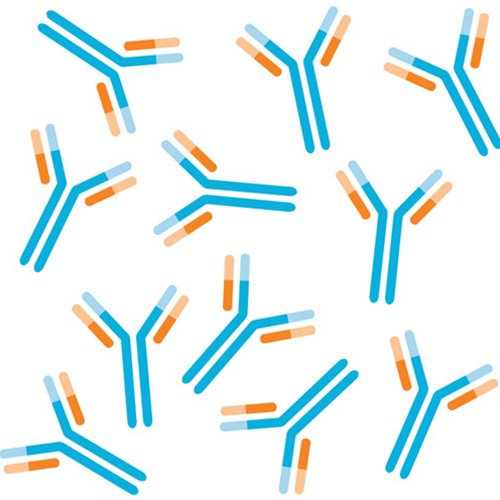Anti-VEGF Receptor Kdrl/FLK-1 Antibody
This rabbit polyclonal antibody was generated against peptide and is specific for zebrafish vascular endothelial growth factor receptor kdr-like (Kdrl).
Highlights:
- Reacts with zebrafish Kdrl
- Binds to the cytoplasmic domain of Kdrl
- Suitable for Whole Mount Immunostaining applications
Kdrl is a receptor for VEGF or VEGFC with tyrosine-protein kinase activity. It's involved in angiogenesis specifically in VEGF-induced sprouting of new blood vessels and artery formation. Many VEGF receptors are required for development of different blood vessel types in the embryo.
From the laboratory of Nathan D. Lawson, PhD, University of Massachusetts Medical School.
This rabbit polyclonal antibody was generated against peptide and is specific for zebrafish vascular endothelial growth factor receptor kdr-like (Kdrl).
Highlights:
- Reacts with zebrafish Kdrl
- Binds to the cytoplasmic domain of Kdrl
- Suitable for Whole Mount Immunostaining applications
Kdrl is a receptor for VEGF or VEGFC with tyrosine-protein kinase activity. It's involved in angiogenesis specifically in VEGF-induced sprouting of new blood vessels and artery formation. Many VEGF receptors are required for development of different blood vessel types in the embryo.
From the laboratory of Nathan D. Lawson, PhD, University of Massachusetts Medical School.
| Product Type: | Antibody |
| Antigen: | Kdrl |
| Accession ID: | Q8AXB3, NP_571547 |
| Molecular Weight: | 147 kDa |
| Clonality: | Polyclonal |
| Reactivity: | Zebrafish |
| Immunogen: | Peptide |
| Species Immunized: | Rabbit |
| Epitope: | Cytoplasmic domain |
| Buffer: | Polyclonal serum with 0.02% sodium azide |
| Tested Applications: | Whole mount immunostaining (1:500) |
| Comments: | Recommend aliquotting into small working volumes after initial thaw and store these at -80°C |
| Storage: | -80C |
| Shipped: | Cold Packs (Domestic, Overnight); Dry Ice (International) |
Whole Mount Immunostaining

Whole mount immunostaining of a wild type zebrafish embryo at 24hpf using anti-zebrafish Kdrl antibody. Embryo was immunostained with primary anti-zebrafish Kdrl antibody at 1:5000, followed by detection using 1:5000 ZyMAXTM goat anti-rabbit IgG(H+L)-HRP (Life Technologies) and tyramide-Cy3 amplification. Strong fluorescence is observed in endothelial cells of the intersomitic vessels (indicated by arrows) and the dorsal aorta (DA).
If you publish research with this product, please let us know so we can cite your paper.


